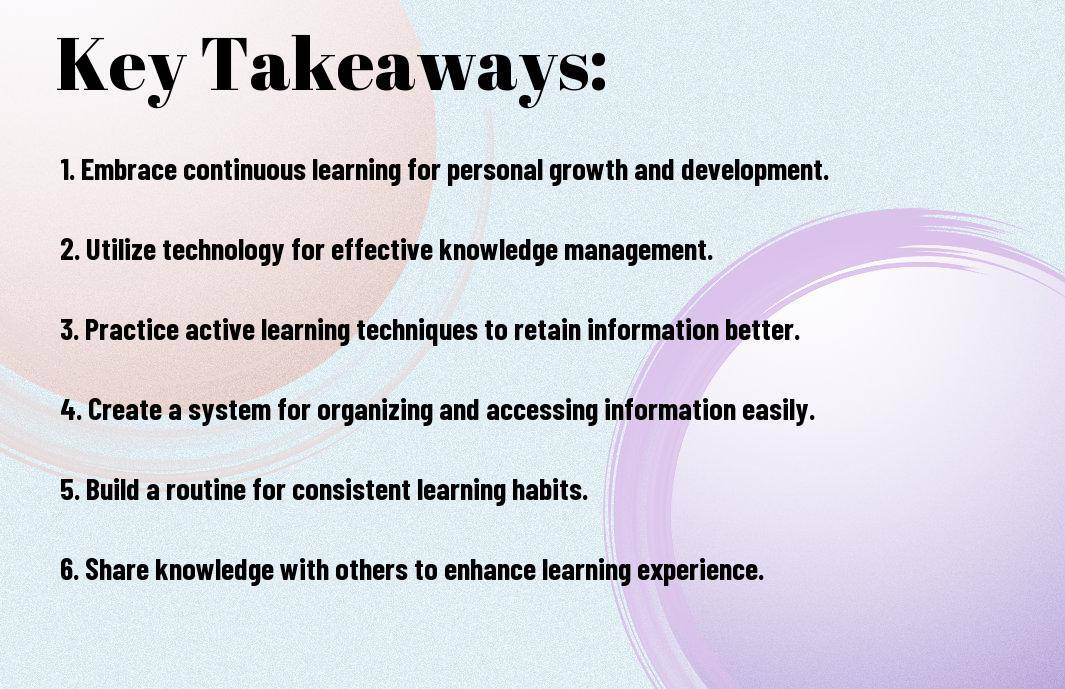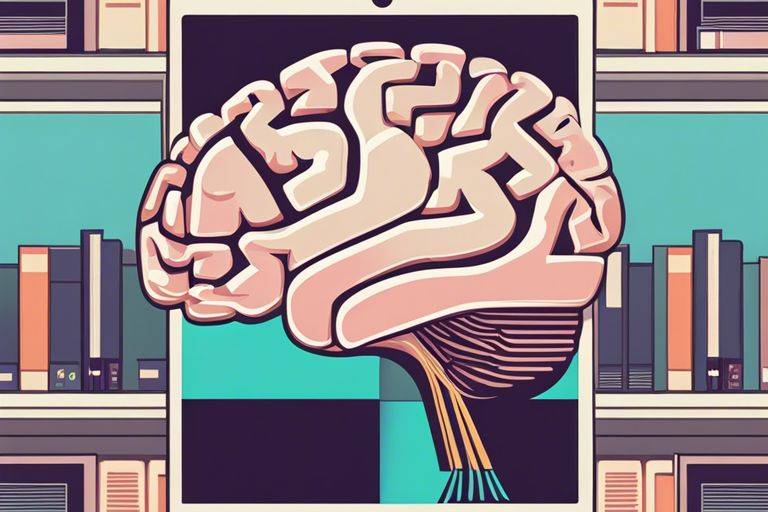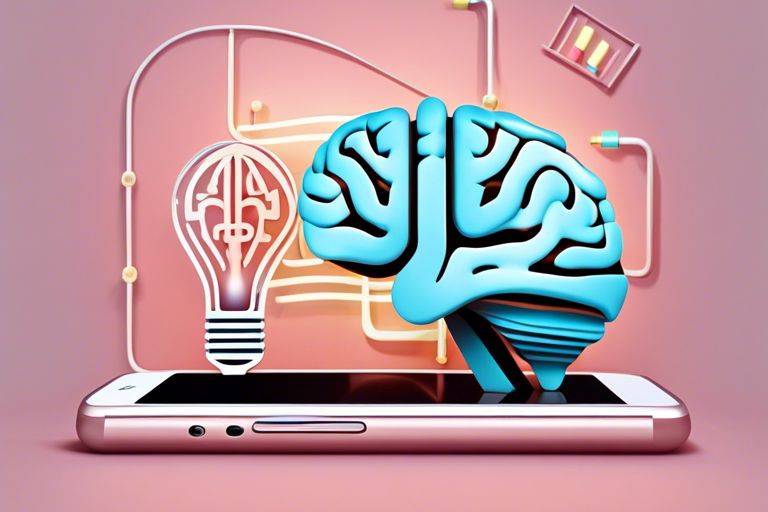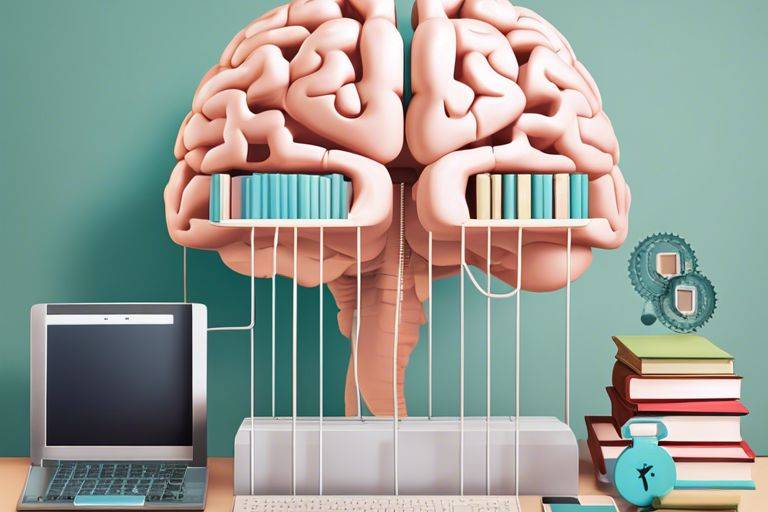Continuous Learning! Overwhelmed by the vast amount of information we encounter daily, it has become crucial to adapt and enhance our learning capabilities. By cultivating the concept of developing your second brain, individuals can significantly boost their productivity, creativity, and knowledge retention. In this blog post, we will research into the crucials of continuous learning and the remarkable benefits of nurturing your second brain.
Key Takeaways:
- Continuous learning is important: In today’s fast-paced world, continuous learning is crucial to staying competitive and relevant in your field.
- Developing a second brain can enhance productivity: By organizing and storing information effectively, you can free up mental space and increase your productivity.
- Use digital tools for better information management: Utilize note-taking apps, mind mapping tools, and other digital resources to create and maintain your second brain.
- Implement the Pareto Principle: Focus on the 20% of information that will provide 80% of the value to you, to avoid getting overwhelmed with unnecessary details.
- Review and revise regularly: Set aside time to review and revise your notes and information regularly to reinforce learning and keep your second brain up to date.
- Experiment and find what works best for you: Everyone’s learning and information processing styles are unique, so experiment with different techniques to find what works best for you.
- Share and collaborate with others: Sharing your knowledge and collaborating with others can help reinforce your learning and expand your second brain through different perspectives and ideas.

Foundations of Continuous Learning
Lifelong Learning Mindset
Little do people realize that continuous learning is not just a choice but a necessity in today’s rapidly evolving world. To thrive in the face of constant change, one must cultivate a lifelong learning mindset. This involves acknowledging that the acquisition of new knowledge and skills is an ongoing journey, not a destination.
Overcoming Obstacles to Continuous Learning
For those seeking to initiate on the path of continuous learning, it’s important to identify and address the obstacles that may stand in the way. The nature of these obstacles can vary, ranging from time constraints and self-doubt to fear of failure and reluctance to step out of one’s comfort zone.
The key to overcoming these obstacles lies in cultivating a growth mindset, embracing challenges as opportunities for growth and development. By overcoming these mental barriers, individuals can unlock their full potential and pave the way for continuous learning and personal growth.
Understanding the Second Brain
Keep Building a Second Brain is a concept coined by Tiago Forte that refers to a system for capturing, organizing, and retrieving knowledge effectively. This second brain is an extension of your mind, helping you offload and externalize information that your primary brain can’t hold onto. It acts as a digital repository for all your ideas, thoughts, notes, and resources, enabling you to enhance your thinking, creativity, and productivity significantly.
Definition and Key Functions
One crucial aspect of a second brain is its ability to serve as an external memory bank, allowing you to free up mental space and focus on higher-level cognitive tasks. It helps you collect information from various sources, organize it in a meaningful way, and access it effortlessly when needed. Additionally, a second brain facilitates knowledge management, enabling you to connect ideas, spot patterns, and generate valuable insights that can fuel your personal and professional development.
The Role of Technology in a Second Brain
To leverage the full potential of a second brain, technology plays a crucial role. Digital tools and platforms provide the infrastructure needed to capture, store, and retrieve vast amounts of information efficiently. From note-taking apps and cloud storage services to project management software and automation tools, technology empowers you to build and maintain a second brain that adapts to your unique workflow and enhances your cognitive abilities.
Another key aspect of incorporating technology into your second brain is the ability to synchronize data across devices, ensuring seamless access to your information anytime, anywhere. Furthermore, the integration of AI and machine learning algorithms can help in processing and analyzing data, offering valuable insights and suggestions to optimize your second brain’s functionality. By embracing technology as a partner in this cognitive augmentation journey, you can unlock new levels of creativity, productivity, and knowledge management.

Building Your Second Brain
Information Capture: Techniques and Tools
Many successful knowledge workers rely on various techniques and tools to capture information effectively. From the traditional method of note-taking to modern digital tools like Evernote, Notion, or Roam Research, there are several options available. One popular technique is the use of mind maps or visual diagrams to connect ideas and information in a more structured format. These tools not only help in capturing information but also aid in organizing and making sense of it later.
Organizing Knowledge: Systems and Frameworks
Building a reliable system to organize your knowledge is crucial in developing a second brain. Utilizing tools like spaced repetition systems (SRS) or knowledge graphs can help in retaining and connecting information effectively. Building upon a robust organization framework ensures easy access to stored knowledge whenever needed, fostering a more efficient learning process.
Second brain can help individuals stay informed, learn new skills, and solve complex problems. By implementing effective information capture techniques and organizing knowledge systematically, you can enhance your learning capabilities and become more productive in your endeavors.

Cognitive Enhancement Strategies
Now, let’s probe into some cognitive enhancement strategies that can help you develop your second brain and optimize your learning process. These strategies are designed to boost your memory, critical thinking skills, and problem-solving abilities, ultimately enhancing your overall cognitive function.
Memory Techniques and Mnemonics
Mnemonics are powerful tools that can help you improve your memory and recall information more effectively. By associating new information with familiar concepts or creating vivid mental images, you can store information in a way that is easier to retrieve later on. Techniques such as the method of loci, acronyms, and visualization can be used to enhance your memory and make learning more efficient.
Critical Thinking and Problem Solving
On top of improving your memory, developing critical thinking and problem-solving skills is necessary for continuous learning. These skills involve analyzing information, evaluating different perspectives, and coming up with creative solutions to complex problems. By honing your critical thinking skills, you can make informed decisions, overcome challenges, and adapt to new situations with ease.
To enhance your critical thinking and problem-solving abilities, practice actively seeking out different viewpoints, challenging assumptions, and breaking down complex problems into manageable parts. By approaching problems from multiple angles and utilizing analytical thinking, you can develop a more well-rounded approach to decision-making and problem-solving.
Incorporating Continuous Learning into Everyday Life
Once again, in the fast-paced world we live in today, continuous learning has become a necessity rather than a choice. To truly embody the spirit of continuous learning, it is important to incorporate it into our everyday lives. By creating a personal learning routine and leveraging social learning and collaboration, we can enhance our knowledge and skills on a regular basis and stay ahead in our fields.
Creating a Personal Learning Routine
Learning should be a consistent and intentional practice in our daily lives. To create a personal learning routine, start by setting aside dedicated time each day for learning. Whether it’s reading articles, watching educational videos, or listening to podcasts, ensure that you engage in some form of learning every day. Additionally, setting specific learning goals and tracking your progress can help you stay motivated and focused on your continuous learning journey.
Leveraging Social Learning and Collaboration
Personal interactions and collaborations play a crucial role in continuous learning. By engaging with peers, mentors, and experts in your field, you can gain new insights, perspectives, and knowledge. Joining online communities, attending workshops, and participating in discussions can provide valuable opportunities for social learning. Surrounding yourself with like-minded individuals who are also committed to continuous learning can inspire and propel you forward in your own learning journey.
Learning from others not only expands your knowledge base but also fosters a sense of community and collaboration. By actively participating in discussions and sharing your own knowledge and experiences, you can contribute to the collective learning of the group. This two-way exchange of information can lead to meaningful connections, new ideas, and innovative solutions that can benefit everyone involved.
Advanced Practices for Second Brain Development
Despite the growing popularity of knowledge management systems like “Building a Second Brain” by Tiago Forte, many individuals struggle to maximize their use. To help you enhance your second brain development, I recommend exploring the 10 Lessons from the “Building a Second Brain” by Tiago Forte. These lessons provide valuable insights into optimizing your digital note-taking and organization practices.
- Integrating Multiple Knowledge Domains
- Harnessing Creativity and Innovation
Integrating Multiple Knowledge Domains
Second brain development involves more than just storing information—it’s about making meaningful connections across various domains of knowledge. By leveraging techniques such as concept mapping and associative thinking, you can weave together disparate ideas to spark new insights and perspectives. Embracing the interconnected nature of knowledge will not only deepen your understanding but also enhance your problem-solving abilities.
Domains As you expand your second brain, it’s crucial to foster an environment that nurtures creativity and cultivates innovation. By regularly exposing yourself to diverse sources of inspiration, experimenting with different mediums of expression, and engaging in collaborative exchanges, you can tap into your creative potential and unlock innovative solutions to complex challenges.
Harnessing Creativity and Innovation
This process isn’t just about generating ideas—it’s about nurturing a mindset that thrives on exploration and experimentation. By embracing a willingness to take risks, welcome failure as a stepping stone to success, and iterate on your concepts, you can cultivate a culture of continuous learning and growth. Creating a foundation rooted in curiosity and adaptability will empower you to push boundaries, challenge conventional thinking, and make meaningful contributions to your field.
Maintaining and Evolving Your Second Brain
Unlike physical clutter, digital clutter can easily accumulate in your second brain due to the sheer volume of information we interact with daily. To ensure optimal functionality and efficiency, regular maintenance and evolution of your second brain are imperative. Just as you would tidy up your workspace to enhance productivity, organizing and updating your digital brain will help you access information faster and stay focused on your goals.
Periodic Review and Reorganization
Periodic review and reorganization of your second brain involve decluttering outdated or irrelevant information, rearranging folders and files for better access, and ensuring your system is up to date with the latest tools and features. Set aside dedicated time on a regular basis to review your existing data, delete unnecessary items, and restructure your digital workspace to suit your evolving needs. By maintaining a tidy and organized second brain, you can optimize its functionality and prevent overwhelm caused by information overload.
Adapting to New Information and Technologies
Second brains are dynamic systems that should constantly adapt to new information and technologies to remain effective. As the digital landscape evolves rapidly, it’s crucial to stay informed about emerging tools and trends that can enhance your second brain capabilities. Incorporating new technologies like automation tools, AI assistants, or advanced search features can streamline your information management process and improve your overall productivity.
Your second brain’s ability to adapt to cutting-edge technologies and innovative solutions can give you a competitive edge in today’s fast-paced digital world. Stay proactive in exploring and integrating new tools that align with your learning and organizational goals to continuously improve the efficiency and performance of your second brain.
Conclusion
Considering all points discussed, it is evident that the concept of developing a second brain is a valuable tool for continuous learning and personal growth. By implementing the strategies outlined in the definitive introductory guide to Building a Second Brain, individuals can enhance their knowledge retention, creativity, and productivity. The ability to offload and organize information effectively allows for better decision-making and problem-solving skills in various aspects of life.
As technology continues to advance and information becomes more abundant, the need for an efficient system to manage knowledge is vital. Embracing the practice of developing a second brain can revolutionize the way individuals learn and work, ultimately leading to a more fulfilling and successful life. To probe deeper into the world of building a second brain, explore the comprehensive guide provided by Forte Labs Building a Second Brain: The Definitive Introductory Guide.
FAQ
Q: What is continuous learning?
A: Continuous learning is the process of actively seeking knowledge and skills throughout your life, constantly developing and improving yourself.
Q: What is a second brain?
A: A second brain is a concept popularized by Tiago Forte, referring to a system or method of organizing and processing information outside of your physical brain.
Q: Why is developing a second brain important?
A: Developing a second brain helps you offload and organize information, making it easier to recall and utilize when needed, enhancing your productivity and efficiency.
Q: How can I start developing my second brain?
A: To start developing your second brain, begin by choosing a note-taking tool like Evernote or Notion, establishing a system for organizing information, and consistently capturing and processing new ideas and data.
Q: What are some benefits of continuous learning and developing a second brain?
A: Benefits include improved memory and retention, enhanced creativity, better decision-making skills, increased productivity, and overall personal growth and development.
Q: How can I integrate continuous learning into my daily routine?
A: You can integrate continuous learning by setting aside dedicated time each day for learning, whether it’s reading articles, watching educational videos, or taking online courses. Consistency is key.
Q: What are some recommended resources for continuous learning and second brain development?
A: Some recommended resources include books like “How to Take Smart Notes” by Sönke Ahrens, online courses on platforms like Coursera and Udemy, and productivity tools like Roam Research and Trello.
Expand Your Reading
The 10-Minute Rule – A Method to Overcome Procrastination by Starting Small
Study Routines Transformed: Unleash Atomic Habits for Students to Boost Your Studies
Unmatched Productivity – Ultimate Guide to Harnessing Your Second Brain
80/20 Rule (Pareto Principle) – Vilfredo Pareto’s Technique to Focus on High-Yield Tasks
Eisenhower Matrix – Dwight D. Eisenhower’s Strategy to Prioritize Tasks by Urgency and Importance



